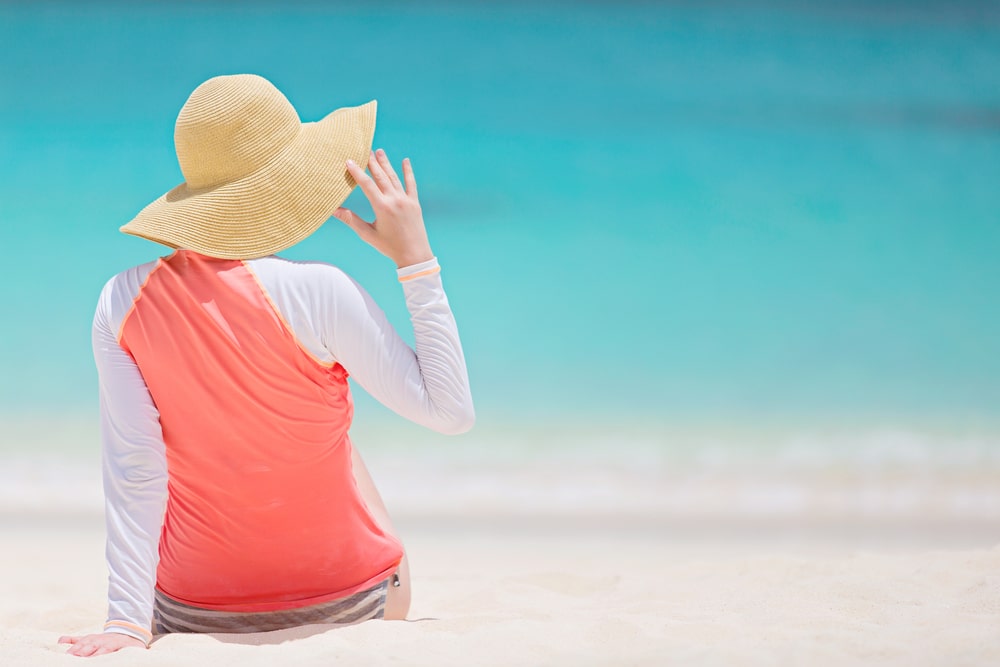Everyone knows that broad-spectrum sunscreen is the most effective way to defend your skin from ultraviolet (UV) damage and skin cancer. But, it's not your only option for protection.
Covering up with sun-protective clothing is one of the easiest ways to significantly boost your UV defense and prevent sunburn. The type of fabric and clothing you wear, however, does have an impact.
Let's take a closer look at the clothes that protect you from the sun, when to wear them, and how to pick the most effective options.
What Fabrics Are Best for Sun Protection?
Tightly woven fabrics, such as silk, polyester, and nylon, are considered the most protective against the sun's rays. Looser weaves, such as linen and hemp, allow more UV rays to penetrate through their tiny holes and spaces. The color of your clothing can also affect how much UV light an item absorbs or reflects. Some clothes might be labeled as "sun protective" or "UPF 50+," but what do these labels mean?
If you're unsure where to start, the Skin Cancer Foundation's seal of recommendation is a good guideline. To be certified with the seal, sun-protective clothing must offer an ultraviolet protection factor (UPF) of at least 30 or above. Similar to sun protection factor (SPF) in sunscreen, UPF measures how much of the sun's rays penetrate the fabric.
This internationally recognized seal can be found on hanging tags, packaging, and marketing material, and it places the item in one of three main categories: daily use, active, or recommended. This denotes how much protection you can expect and what activities an item of clothing might be most suited to. However, it's important to remember there are no clothing options that will completely protect you from sunburn, so sunscreen should always be worn underneath.
What Are the Types of Sun-Protective Clothing?
Hats
On active days when you're enjoying the great outdoors, you'll need a UPF-certified hat. This will keep UV rays from burning your scalp and damaging the delicate skin on your face, ears, neck, and eyes—all areas that are often missed with sunscreen. Choose a hat with a wide brim made from straw, nylon, or polyester.
Long-Sleeved Shirts
Wearing long-sleeved shirts is a great way to ensure the top layer of your body is protected when you're enjoying life in the sun. Worried about getting too hot? Look for UPF clothing made from cooling fabrics to keep you comfortable in warmer temperatures and control odor.
Trousers
The UV index is different around the country and the world, so it's important to be aware of the areas where you're more at risk. The Environmental Protection Agency advises that you cover up wherever possible in high UV Index areas of 3 and above. In this case, a pair of UPF trousers may be needed in addition to a long-sleeved top.
Swimwear
A UPF rash guard or long-sleeved swimsuit is a good way of shielding you and your children's skin when on vacation, especially when playing in the pool or ocean. Don't forget that water reflects UV light, so it hits the skin twice! Full protection is essential for preventing sunburn. If you enjoy watersports and active beach days, enhance your protection with UPF swimming leggings.
Forming Good Sun-Safe Habits
Now that you know the added benefits of sun-protective clothing, you can ensure you and your family are as safe as possible while enjoying time outdoors. Don't forget to apply (and reapply!) your usual broad-spectrum sunscreen, and seek shade when the sun is at its strongest between 10 a.m. and 4 p.m. In the end, your skin will thank you.
